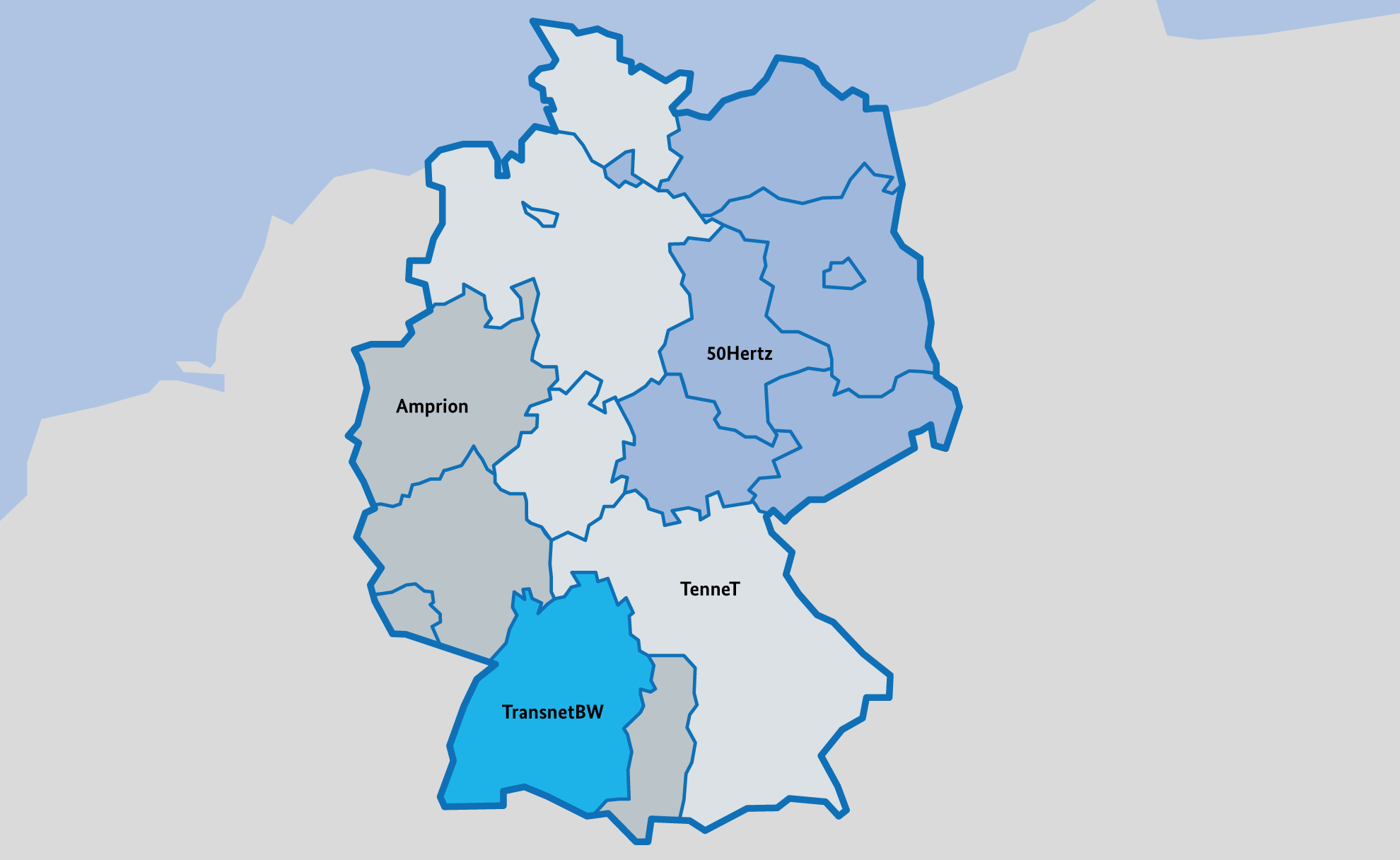Hint: This website is not optimized for your browser version.
Control area
A control area is a spatially defined network area under the responsibility of a transmission system operator.
The German transmission system
Germany's electricity grid can be divided into several voltage levels. Electricity consumers such as individual households or charging points receive their electricity through low voltage distribution networks. Medium-high voltage networks supply electricity to mostly larger consumers – to industry for example – on the regional level.
The medium-high voltage networks are in turn connected to the high voltage networks. Larger electricity generating plants including wind farms and large consumers such as industrial units are connected to the high voltage level. They form the distribution network connection.
Large amounts of extra high voltage electricity are transported via transmission networks over long distances from the power stations to the regional distribution grids. They connect the German electricity grid to the neighbouring countries' grids, enabling electricity to be traded across European borders.
The German transmission system is divided into four regions known as control areas. Several countries in Europe such as Sweden divide their transmission system into regions, though not all EU countries do.
The four control areas are connected with one another via interconnectors and together they comprise Germany's interconnected grid.
There are four Transmission system operators that manage these control areas. They are responsible for the stability of the electricity grid within their control area. That means they maintain a stable System frequency within their respective control area, for example by using balancing energy.
A national grid control cooperation is in place so that when there are frequency fluctuations Balancing energy ensures a safe and cost effective power supply throughout the control areas. Electricity from a control area is transmitted through the interconnectors into areas of another control area where demand for electricity is at a high level. Feed-in and offtake are thus balanced throughout the control areas.
TenneT's system passes through the whole of Germany, running from the border with Denmark in the north to the Alps in the south. 50Hertz's transmission system is located in the north and east of the country. Amprion operates the systems in the west and south-west. TransnetBW is responsible for a large part of the network in the state of Baden-Württemberg.
Displaying data categories for various control areas on SMARD
In SMARD's "Market data visuals" section, data can be displayed for the different control areas. You can choose between the German control areas, the APG control area (Austria), and the Creos control area (Luxembourg).
In addition to the individual control areas, which fall under the responsibility of the respective TSO, you can also display data for individual countries and market areas, including the market areas of DE/LU (Germany/Luxembourg) and DE/AT/LU (Germany/Austria/Luxembourg); data for the latter market area for the period up to 30 September 2018. Luxembourg is in fact treated as part of the German market area.
For the market area Germany/Austria/Luxembourg (DE/AT/LU), data categories can only be shown up until the congestion management scheme was introduced in October 2018.
